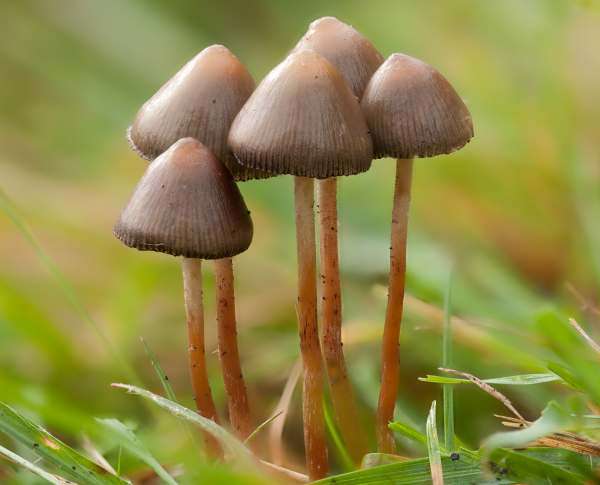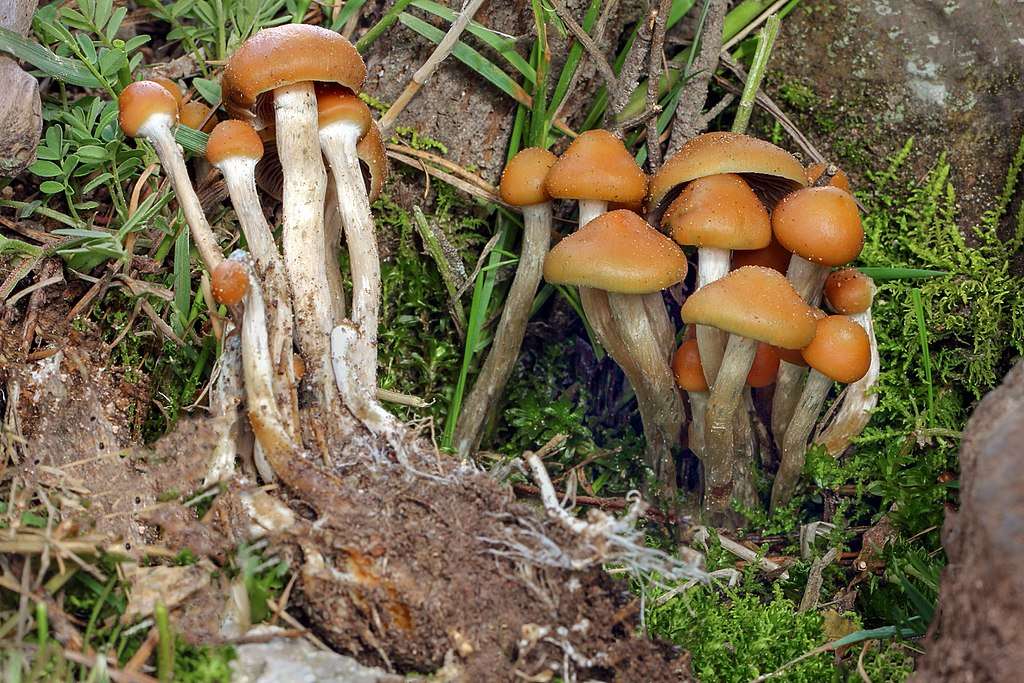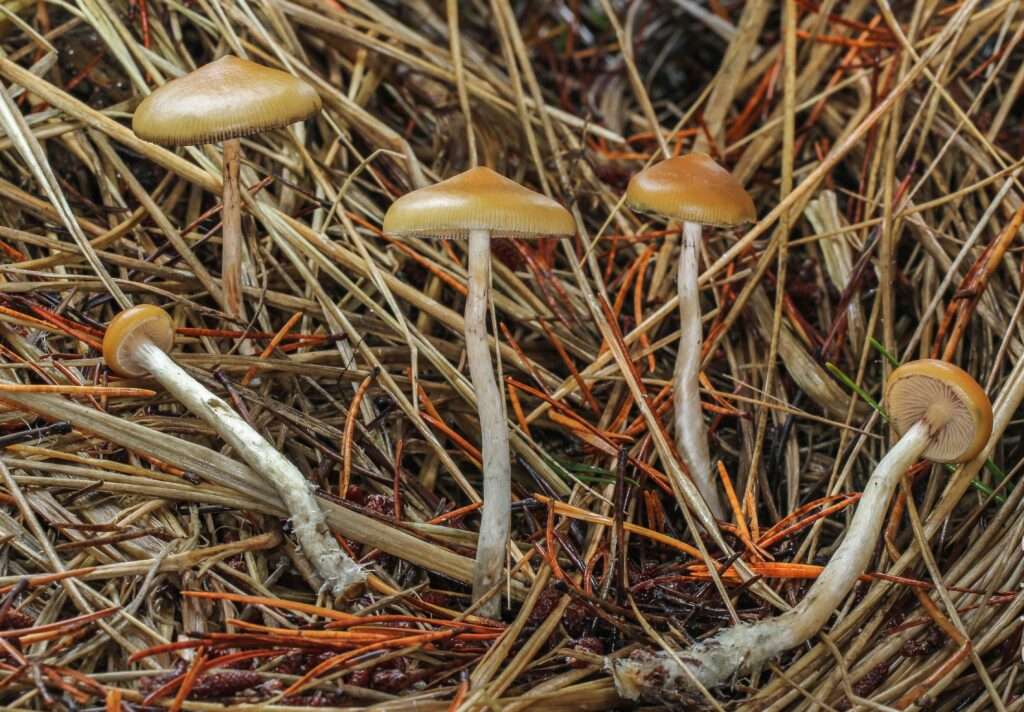
Scientific name
Psilocybe baeocystis
Description
The cap has a diameter of 15-55 mm and is conic to ambiguously conic to convex. When young, the cap margin is curved inwards, seldom turning flat with age, and is frequently clearly undulating, translucent-striate, and bruised, greenish-bluish along the margin. Its hue ranges from dark olive brown to brown, with hints of steel blue. P. baeocystis is more unique than most other Psilocybes due to its wavy edge, which frequently (but not always) gives the mushroom the appearance of having a piece of fabric draped over it. The mushroom also exhibits a severe bluing reaction, occasionally bruising blue even when watered on. The mushroom as a whole may become blue.

Habitat
Bottle caps mushroom is a hallucinogenic mushroom endemic to the Pacific Northwest that has been discovered growing wild in sections of New England. However, it is possible that it is not endemic to New England. It may have been introduced. The plant is prevalent in garden beds that have been mulched with wood shavings or peat moss, as well as in ancient but well-kept lawns. It’s not widely known, perhaps because it’s tough to grow and doesn’t dry well.
Uses/Importance
Bottle caps contain Psilocybin, Psilocin, and baeocystin hallucinogenic compounds. With a psilocybin level of.85, it is more potent compared to other common mushrooms. For whatever cause, this mushroom is reported to have a wide range of effects, and sometimes even mushrooms belonging to the same patch can have disparate effects. Strange colors and a strong sense of enjoyment are the most prevalent, although certain bottlecaps can produce horrific visuals. Remember, a lot of this is dependent on each individual, but this species may have a wider range of strength than any other in the genus.
Table





